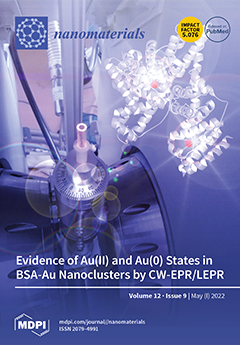99Mo/
99mTc generators play a significant role in supplying
99mTc for diagnostic interventions in nuclear medicine. However, the applicability of using low specific activity (LSA)
99Mo asks for sorbents with high sorption capacity. Herein, this study aims to evaluate
[...] Read more.
99Mo/
99mTc generators play a significant role in supplying
99mTc for diagnostic interventions in nuclear medicine. However, the applicability of using low specific activity (LSA)
99Mo asks for sorbents with high sorption capacity. Herein, this study aims to evaluate the sorption behavior of LSA
99Mo towards several CeO
2 nano-sorbents developed in our laboratory. These nanomaterials were prepared by wet chemical precipitation (CP) and hydrothermal (HT) approaches. Then, they were characterized using XRD, BET, FE-SEM, and zeta potential measurements. Additionally, we evaluated the sorption profile of carrier-added (CA)
99Mo onto each material under different experimental parameters. These parameters include pH, initial concentration of molybdate solution, contact time, and temperature. Furthermore, the maximum sorption capacities were evaluated. The results reveal that out of the synthesized CeO
2 nanoparticles (NPs) materials, the sorption capacity of HT-1 and CP-2 reach 192 ± 10 and 184 ± 12 mg Mo·g
–1, respectively. For both materials, the sorption kinetics and isotherm data agree with the Elovich and Freundlich models, respectively. Moreover, the diffusion study demonstrates that the sorption processes can be described by pore diffusion (for HT-synthesis route 1) and film diffusion (for CP-synthesis route 2). Furthermore, the thermodynamic parameters indicate that the Mo sorption onto both materials is a spontaneous and endothermic process. Consequently, it appears that HT-1 and CP-2 have favorable sorption profiles and high sorption capacities for CA-
99Mo. Therefore, they are potential candidates for producing a
99Mo/
99mTc radionuclide generator by using LSA
99Mo.
Full article






